Top 5 Reasons for Growing Sprouts at Home & How to Grow Them
Here are the top 5 reasons for growing sprouts at home & how to grow them year-round in 4 easy steps.
— Permacrafters gets commissions for purchases made through links in this post. We encourage you to prioritize secondhand goods whenever possible. —
About eight years ago, I was suffering from chronic fatigue, anxiety, difficulty concentrating, and bad skin. I had heard from a family friend that the Life Transformation Program at the Hippocrates Health Institute in Florida (which is based on eating mostly raw food and no sugar) had cured her arthritis and was helping people heal from many illnesses. Eager for a solution, I skeptically turned to eating a similar raw food diet.
For 3 weeks, I ate nothing but raw food, and 60% of that food in volume was – you guessed it – sprouts! If I’m being completely honest, going into it, I really was not a fan of the taste of sprouts. Little did I know there was actually a huge variety of sprouts to choose from that were so varied in texture and taste. What happened over the course of those 3 weeks absolutely surprised me. First, my taste buds changed. I wasn’t forcing the sprouts down anymore; I was actually excited to pile the delicious sprouts onto my plate and dig in. Second, the transformation that took place in my body amazed me. The first 10 days were terrible and I was craving cooked food and pasta – lots of it! But once I got over the hump, I was more energetic than ever, my skin cleared up and my mental clarity was back! Third, I experienced serenity. After dealing with anxiety about food and my body image, I felt serene for the first time in years. Mealtime had become a pleasure as opposed to a stressor. Needless to say, after just 3 weeks, I was sold on the power of sprouts and raw food.
“Sprouts are at the peak of their nutritional value. They have more vitamins, minerals, proteins and essential fatty acids than dry seeds or their fully-grown counterpart.“
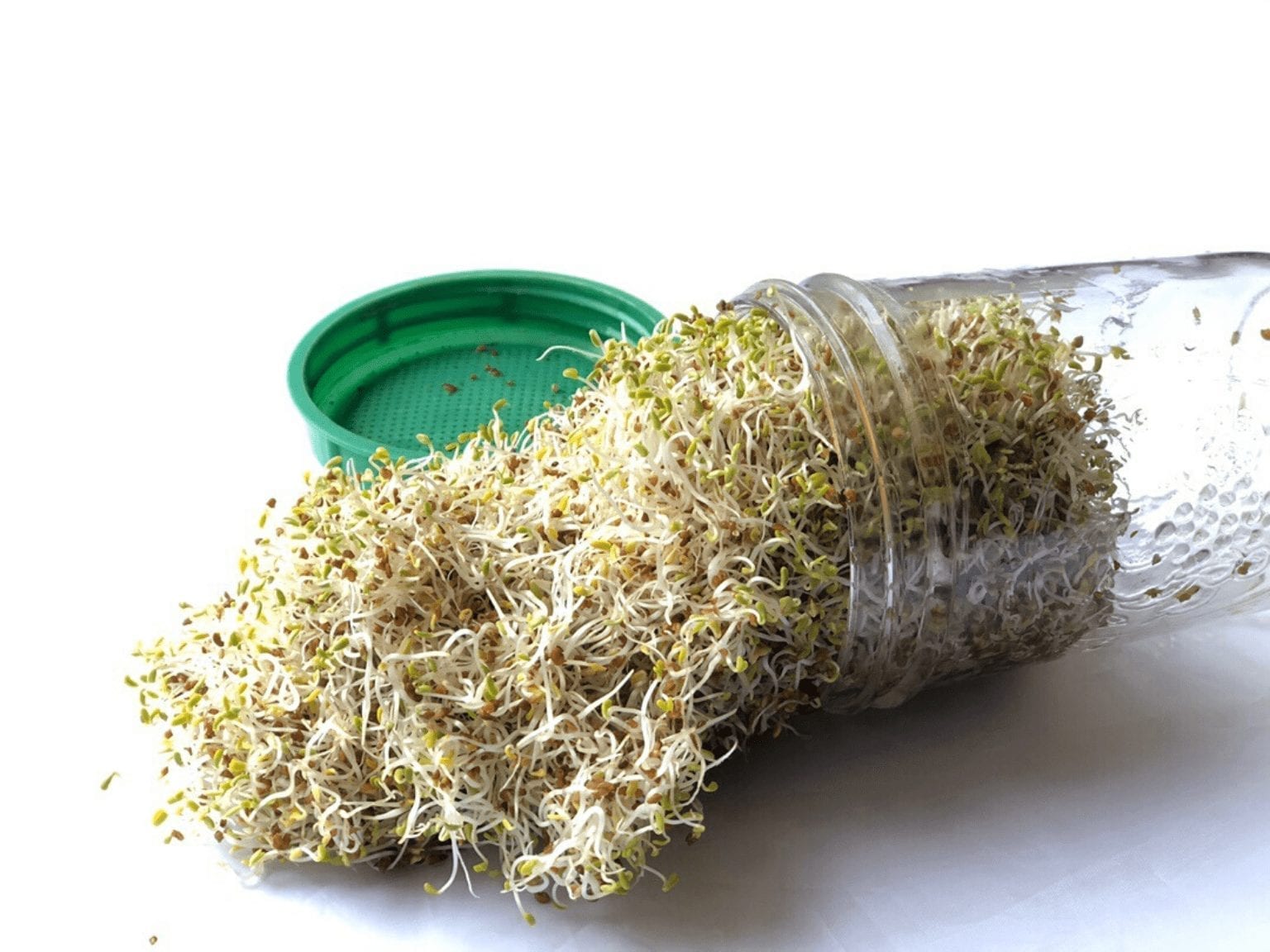
All this to say that sprouts work wonders for your health. While I don’t eat sprouts every hour of every day anymore, I do add them regularly into my meals. If you’re curious about what incorporating sprouts into your life can do for you, here are my top 5 reasons for growing sprouts at home:
- Sprouting removes toxins
All seeds contain toxins to protect themselves from being eaten. When seeds, like lentils, are soaked in water, they shed these toxins as they begin to germinate. You can remove these toxins by cooking the seeds instead, but you end up losing a lot of their nutritional benefits in the process. Best to eat them as raw sprouts!
- Sprouting maximizes nutritional value
Let’s compare a sprout with a dry seed, or a sprout with its fully-grown counterpart. In both cases, the sprout will have more vitamins, minerals, proteins and essential fatty acids. Sprouts are at the peak of their nutritional value. As a seed germinates, enzymes are predigesting complex nutrients, turning them into easily digestible ones for your body to assimilate.
- Sprouts offer a balanced nutrition
When you sprout, you are growing your own medicine and vitamins from nature. If you eat a variety of sprouted leafy greens, legumes, grains and nuts, they are a source of complete protein. Sprouts even absorb minerals and trace elements from your rinsing water. They also help maintain or restore the proper alkaline/acid balance in your body.
- Sprouts grow indoors year-round
Sprouts don’t require any sunlight, they are low-maintenance and barely require any space. Living in your mom’s basement is not an excuse for not growing them 😉 You can eat fresh sprouts on even the coldest day in winter.
- Homegrown sprouts cost a fraction of the store-bought ones
Homegrown sprouts are so much cheaper (and fresher!) than those you would purchase at the store. Buying organic seeds in bulk from companies like High Mowing Organic Seeds will save you a lot of money. You can also grow some of your seeds to maturity and save their seeds.
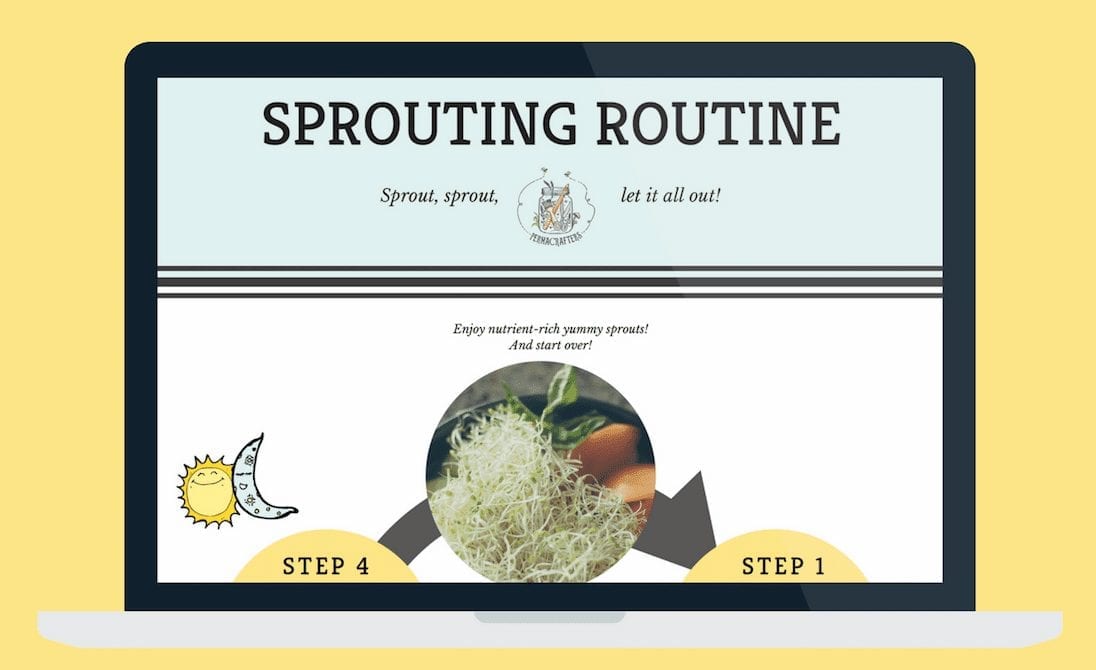
Want to start sprouting now?
Sign up to unlock your printable Sprouting Instructions. Post them on your fridge for easy reference. Happy sprouting!
How do you get started?
Here are the materials you’ll need for growing sprouts at home and the easy sprouting instructions.
Sprouting Materials:
- Organic sprouting seeds. (We buy ours in bulk from High Mowing Organic Seeds)
- A pint-size mason jar
- Cheesecloth or sprouting lid
- Drying rack or bowl
- Filtered water
Sprouting Instructions:
Start time: Before bedtime
Step 1 – Measure out the seeds
- Place 1.5 tbsp. of seeds in your jar.
- Fasten the sprouting lid (or attach the cheesecloth with the screw band)
Step 2 – Rinse the seeds
- Rinse with cool filtered water (FIY: EPA recommends 1 part bleach to 10 parts water; we don’t follow this guideline.)
Step 3 – Soak the seeds overnight
- Cover your seeds with at least 3x as much water in volume
- Let them sit 8-12 hours out of direct sunlight
Step 4 – Rinse & Drain 2-3 times a day
- In the morning, pour off the water (your houseplants will love it!)
- Rinse your sprouts in filtered water at least morning and night for 2-7 days until they’re ready (2-3 days for beans; 5-7 days for leafy greens).
- After each rinse, turn jar upside down on drying rack or bowl to let water drain. That’s it!
Have a go at growing sprouts at home and tell us how your experience goes in the comments below!
Want to learn more about sprouting in our ONLINE video workshop “Sprouts & Microgreens: Homegrown Living Foods”? Click here for the juicy details!”
Sprouts & Microgreens - Free Trial
Sign up for the FREE sample of the e-course on how grow sprouts and microgreens all throughout the year.

P.S. Read our post for the Zero Waste Collective on growing sprouts & microgreens if you want to learn more!
By commenting you accept our Privacy Policy.
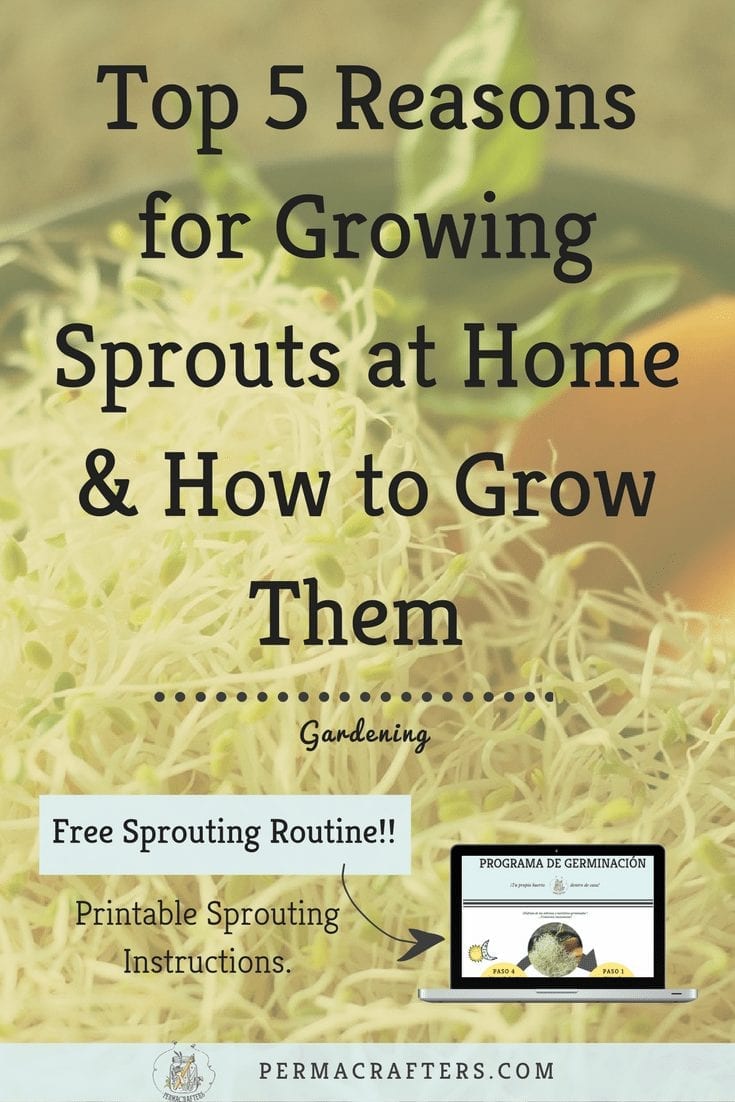
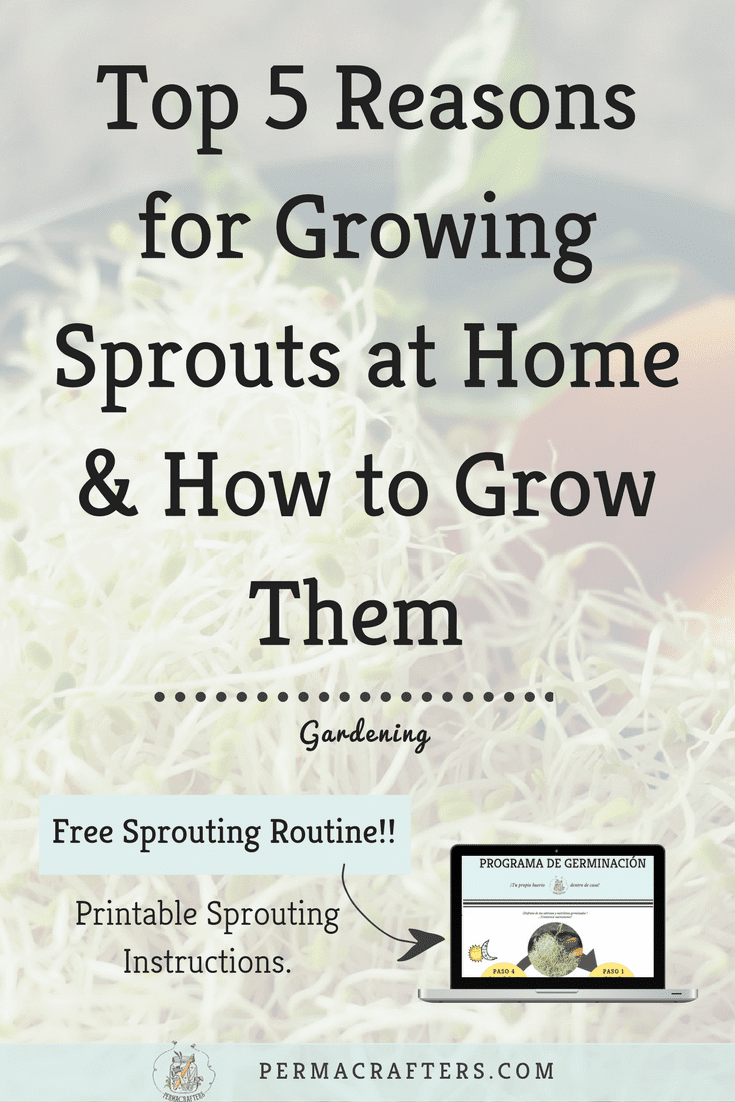
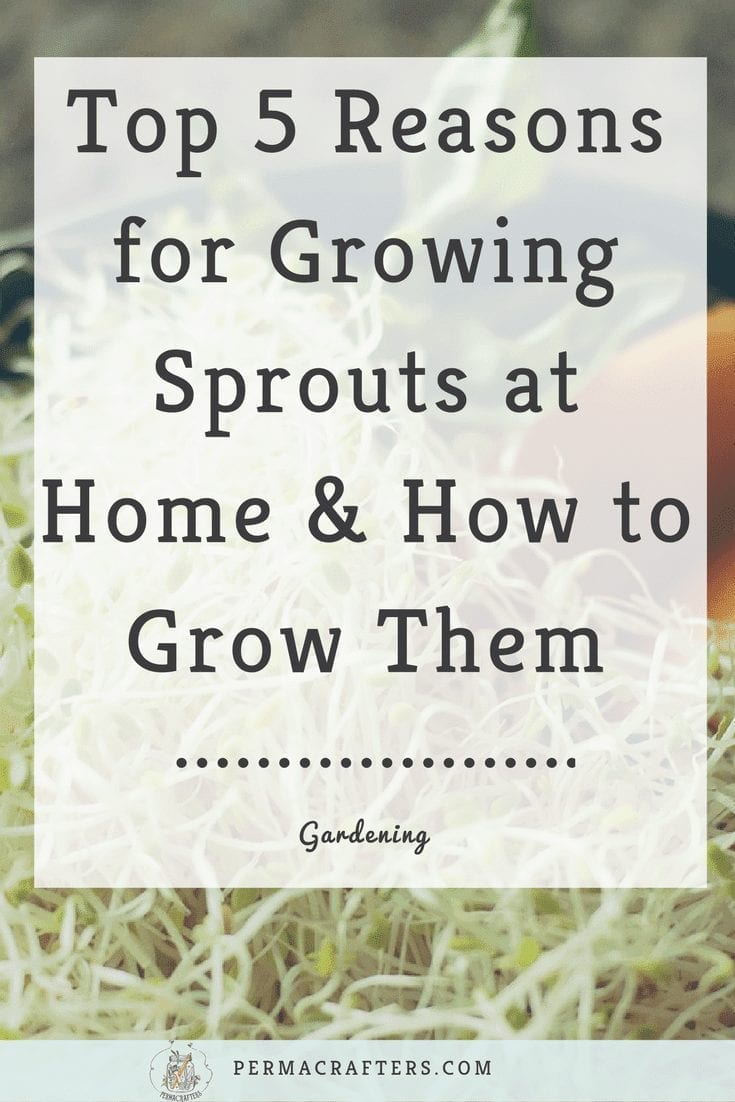
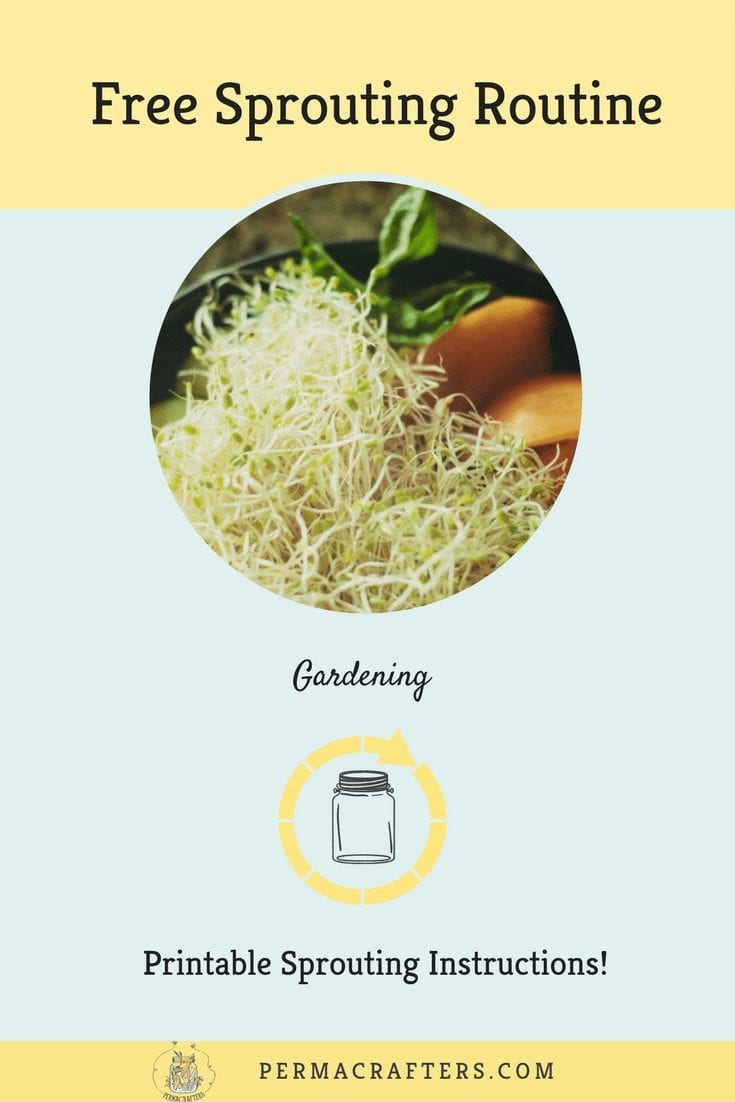
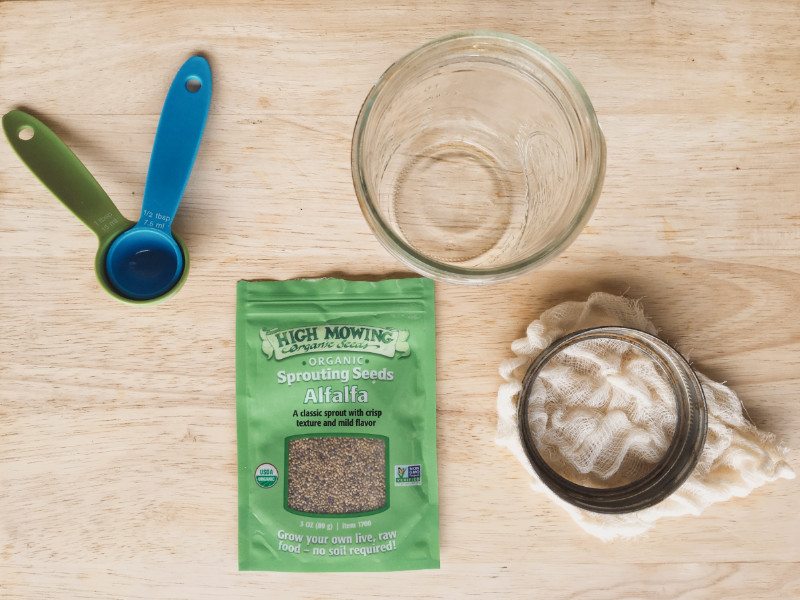
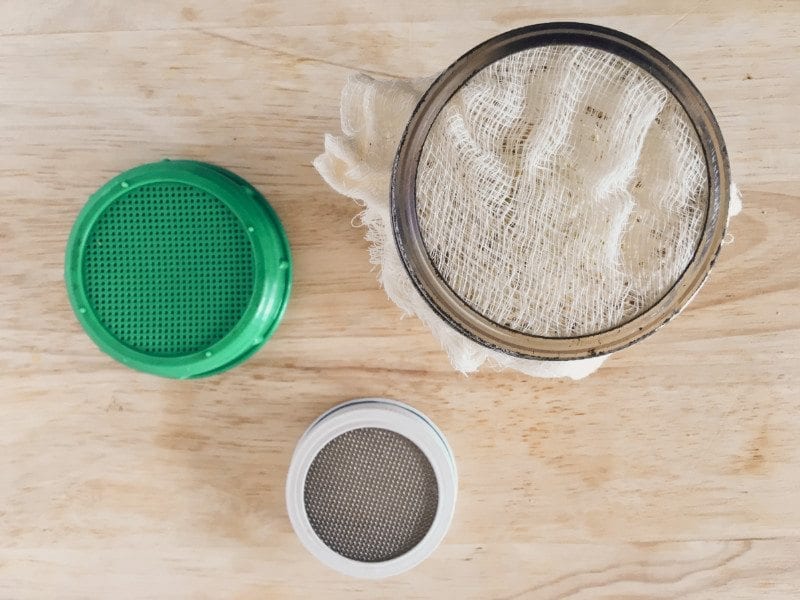
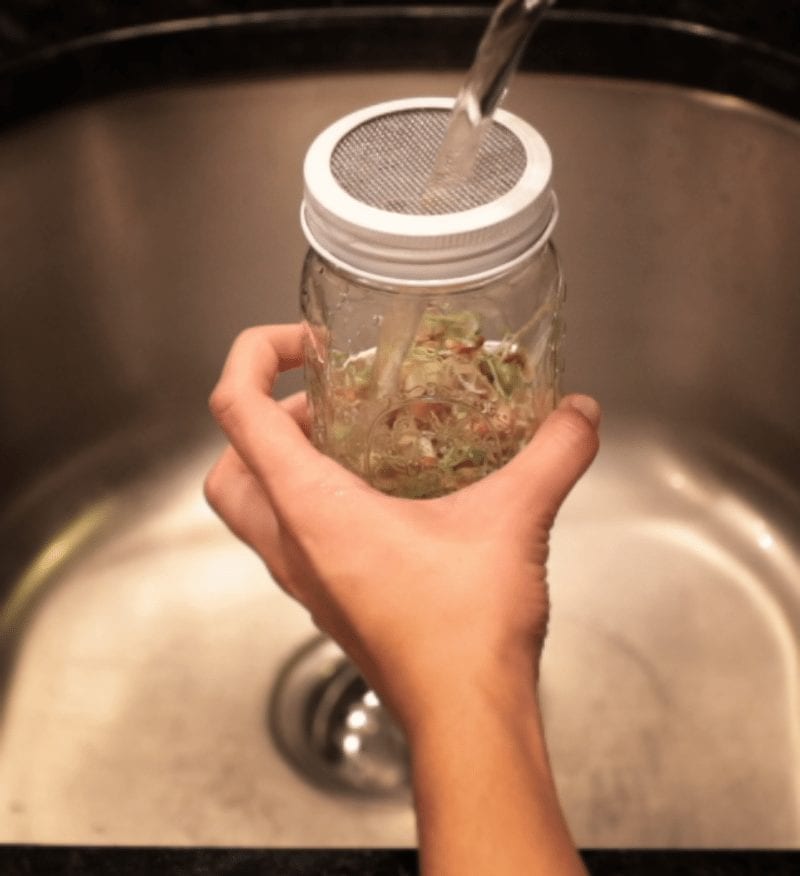
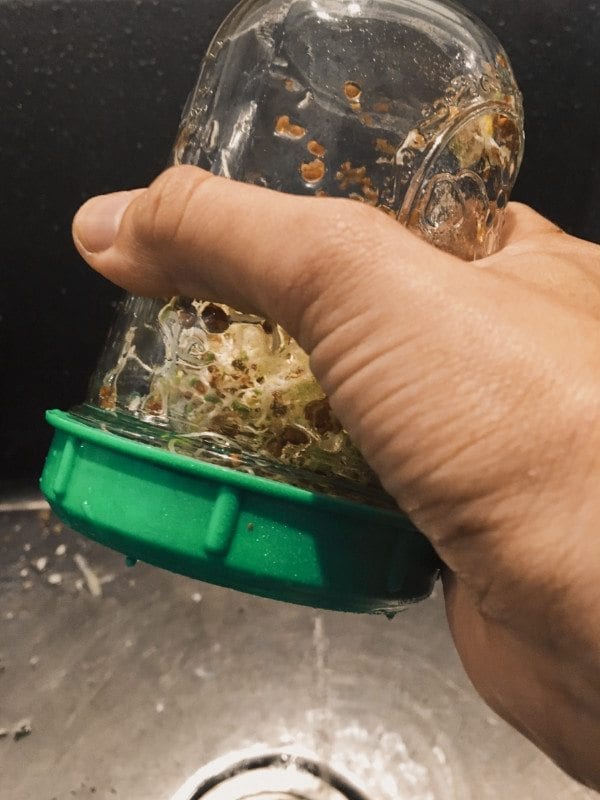
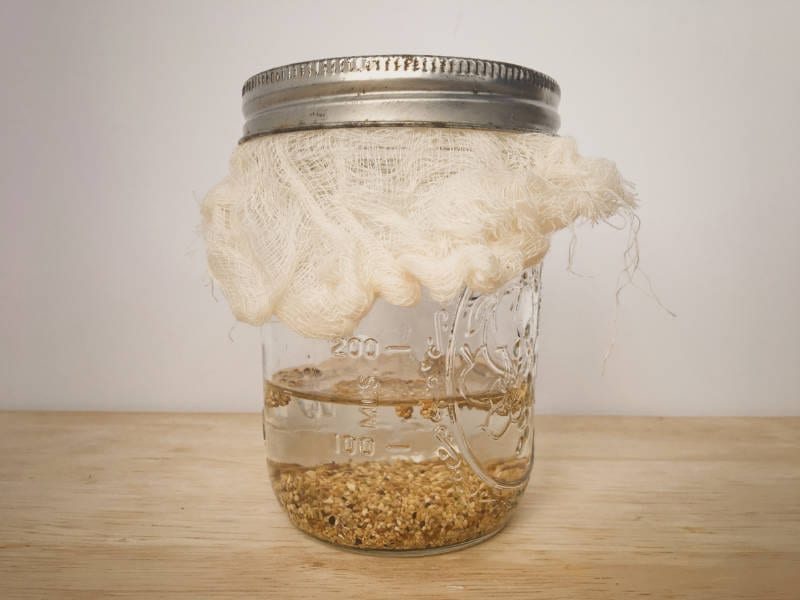
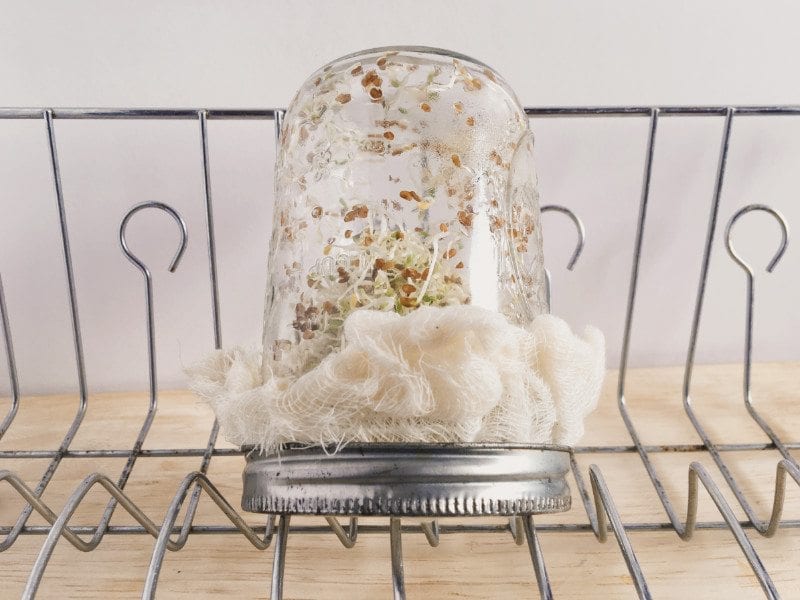
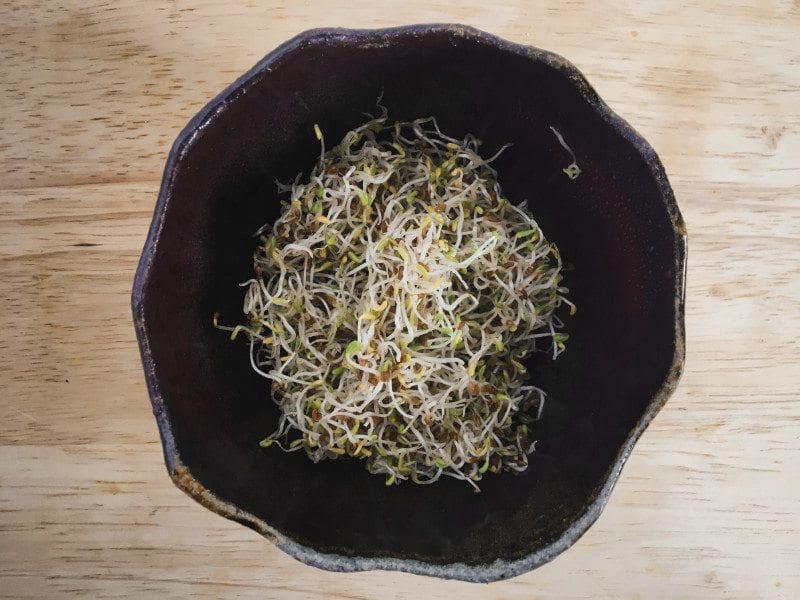
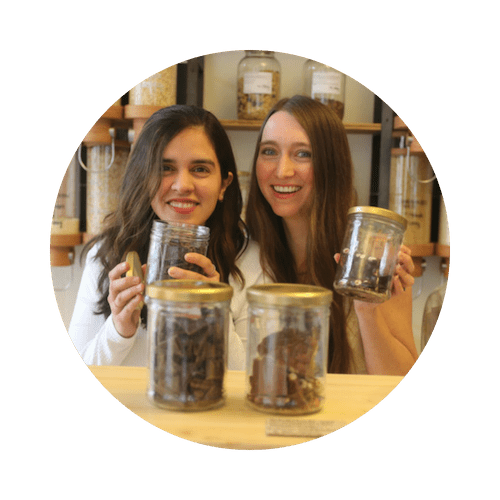


Can you source or elaborate on, “Let’s compare a sprout with a dry seed, or a sprout with its fully-grown counterpart. In both cases, the sprout will have more vitamins, minerals, proteins and essential fatty acids.”?
Are sprouts being compared to their fully grown counterpart cup per cup, by weight, or how was that determined? Like how many cups of a fully grown broccoli plant do I need to eat in order to get equal nutrition to a cutoff broccoli sprouts?
Great question, Kimberly! You’re right, I didn’t clarify if it was by weight or by volume.
Sprouts contain more vitamins, minerals, proteins and essential fatty acids than their fully-grown counterparts by weight, and depending on the nutrient, sometimes also by volume.
You asked how many cups of fully-grown broccoli you would need to eat in order to get equal nutrition to a cup of broccoli sprouts.
If I may, let me take raw mature radishes as an example instead of broccoli since detailed nutrition data for radish sprouts was more easily available (you may find helpful nutrition information at the USDA Food Composition Database).
The answer really depends on what nutrient you want to have the equivalent of!
For Vitamin A, IU: 1 cup of radish sprouts (38g) = 19 cups of mature raw radishes (116g for 1 cup)
For Fatty acids, monounsaturated: 1 cup of radish sprouts (38g) = 8 cups of mature raw radishes
For Magnesium: 1 cup of radish sprouts (38g) = 1.5 cups of mature raw radishes (116g)
So if you’re going for magnesium specifically, maybe it isn’t quite worth eating a cup of sprouts over radishes. That’s in terms of volume though. If you look at magnesium by weight, 100g of radish sprouts has 4.5 times more magnesium than 100g of raw mature radishes.
Generally speaking, sprouts will have a higher concentration of nutrients by weight, and very often by volume too.
I hope that is helpful, Kimberly. If you want to read up more about this, I suggest having a look at the University of Maryland study that looked at 25 microgreens and compared them to their fully-grown counterparts. They found, for example, that red cabbage microgreens had 69 times the vitamin K by weight than mature leaves! Study here: https://www.ncbi.nlm.nih.gov/pubmed/22812633
Other resources to check out:Sprout People Nutrition on Sprout Nutrition
International Sprouts Growers Association that have a great Sprouts Nutrition sheet
Michael Greger, M. D., NutritionFacts.org who explains 1 cup of broccoli sprouts = 27 cups of mature broccoli in terms of sulphorophane
And again, the USDA Food Composition Database